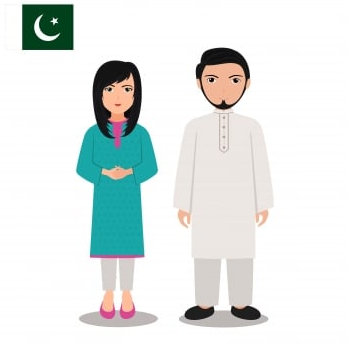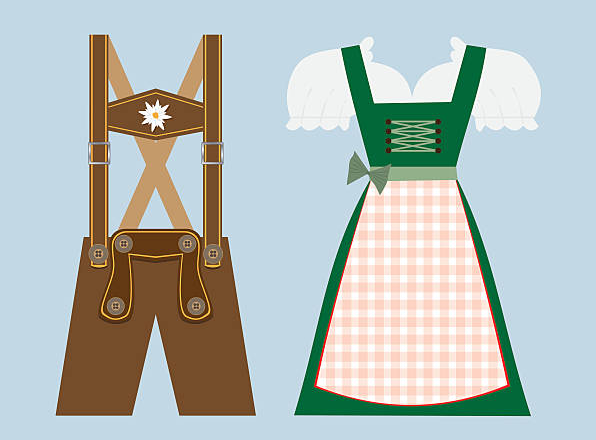When it comes to cultural heritage, few things capture the essence of a nation like its traditional clothing. In Angola, a country rich in history and diverse ethnicities, the Angola National Dress known as the Pano holds a special place. In this article, we will delve into the world of the Pano, its symbolism, how it is worn, and the cultural importance it holds in Angolan society.
Traditional Clothing of Angola
Before we focus on the Pano, let’s first understand the broader context of traditional clothing in Angola. Traditional attire in Angola is a testament to the country’s diverse cultural heritage, with each ethnic group having its unique clothing traditions. These clothing styles have been passed down through generations and continue to play a significant role in Angolan culture today.
History and Significance of Angola National Dress
The history of traditional clothing in Angola dates back centuries. These garments served as a way to express cultural identity, social status, and celebrate important events such as weddings, initiation rites, and festivals. Traditional clothing embodies the traditions, values, and customs of the Angolan people, acting as a visual representation of their heritage.
The Pano – Angola’s National Dress
At the heart of Angola’s traditional clothing lies the Pano, which is considered the national dress of the country. The Pano is a loose-fitting, brightly colored garment that exudes elegance and grace. Its distinct features and cultural significance make it an integral part of Angolan identity.
Description and Features
The Pano is typically made from lightweight fabric, allowing for ease of movement in Angola’s warm climate. It is a versatile piece of clothing, consisting of a rectangular or square-shaped cloth that can be draped and styled in various ways. The Pano is often adorned with intricate patterns and embroidery, showcasing the artistic skills of Angolan craftsmen and women.
Symbolism and Cultural Significance
The Pano carries deep symbolic meaning within Angolan culture. It represents unity, diversity, and the harmonious coexistence of different ethnic groups in the country. Wearing the Pano is an expression of national pride and serves as a reminder of Angola’s rich cultural heritage. It is a tangible link to the past and a testament to the resilience of the Angolan people.
How the Pano is Worn
The Pano can be worn in various traditional styles, each unique to different regions and ethnic groups within Angola. The most common way to wear the Pano is by wrapping it around the body, creating a loose-fitting and flowing silhouette. It is often secured at the waist with a belt or sash, enhancing the overall elegance of the outfit.
Traditional Styles and Variations of Angola National Dress
In different regions of Angola, you will find distinct variations in the way the Pano is worn. For example, in the northern provinces, women may fold the cloth in a triangular shape and drape it over their shoulders, while in the central and southern regions, it is more common to see the Pano wrapped around the waist and cascading down to the ankles. These variations reflect the cultural diversity and regional customs within Angola.
Modern Adaptations and Influences on Angola National Dress
As Angola has experienced modernization and cultural exchanges, the Pano has also evolved. Nowadays, you can find contemporary adaptations of the Pano that incorporate elements from Western fashion or fuse traditional and modern styles. This fusion of influences adds a touch of uniqueness and reflects the dynamic nature of Angolan culture.
Materials and Colors Used in Angola National Dress
The Pano is made from various fabrics, depending on the region and personal preference. Cotton and silk are commonly used due to their breathability and comfort in Angola’s tropical climate. The fabrics are often adorned with vibrant colors, intricate patterns, and embroidery, showcasing the exceptional craftsmanship of Angolan artisans.
Fabrics and Patterns
Different regions favor specific fabrics and patterns for their Panos. For instance, the Kuba people in the Kasai region are known for their use of raffia cloth and geometric patterns, while the Ovambo people in the north may use brightly colored cotton fabrics with bold prints. These fabric choices and patterns contribute to the overall aesthetic and cultural identity of the Pano.
Meaning Behind Colors
Colors play a significant role in Angolan culture, and the Pano is no exception. Each color used in the Pano carries its own symbolic meaning. For instance, red represents strength and vitality, while yellow symbolizes wealth and prosperity. The combination of colors in the Pano can convey specific messages or reflect personal preferences, further enriching the cultural significance of the attire.
Significance and Styles of Angola National Dress
The choice of accessories can vary depending on the occasion, region, and personal preference. They serve not only as decorative elements but also as a way to preserve cultural traditions and pass them down through generations. The styles and materials used in these accessories reflect the diversity and richness of Angolan cultural heritage.
Importance of the Pano
The Pano is more than just a piece of clothing; it is a symbol of national identity and cultural pride. Wearing the Pano on special occasions is a way for Angolans to honor their heritage, pay homage to their ancestors, and demonstrate their commitment to preserving and promoting their traditional customs.
Modern Interpretations and Adaptations
In contemporary Angolan society, the Pano has found its place not only in traditional settings but also in fashion shows, cultural exhibitions, and even everyday life. Designers and fashion enthusiasts have embraced the Pano, incorporating it into modern designs and creating fusion outfits that blend traditional and contemporary elements. This resurgence has sparked a renewed interest in traditional clothing and has helped preserve and promote Angolan cultural heritage.
Conclusion
The Pano, Angola’s national dress, is a vibrant and significant symbol of the country’s cultural heritage. Its rich history, diverse styles, and deep cultural meanings make it a cherished attire among the Angolan people. As Angola continues to evolve in a rapidly changing world, efforts to preserve, promote, and adapt the Pano ensure that this remarkable traditional clothing will continue to thrive, representing the beauty and diversity of Angola for generations to come.
FAQs (Frequently Asked Questions)
- What is the origin of the Pano?
The Pano has its roots in Angola’s diverse ethnic groups, reflecting the cultural heritage of the country.
- Can men wear the Pano?
Yes, both men and women in Angola wear the Pano during cultural celebrations and traditional events.
- Are there specific colors or patterns associated with the Pano?
The choice of colors and patterns can vary, but they often hold symbolic meanings and reflect cultural traditions.
- Are there any initiatives to promote and preserve the Pano?
Yes, various organizations and cultural institutions in Angola are actively involved in safeguarding traditional clothing and promoting its importance through research, training, and cultural events.
Conclusion
The Pano, Angola’s national dress, is a vibrant and significant symbol of the country’s cultural heritage. Its rich history, diverse styles, and deep cultural meanings make it a cherished attire among the Angolan people. As Angola continues to evolve in a rapidly changing world, efforts to preserve, promote, and adapt the Pano ensure that this remarkable traditional clothing will continue to thrive, representing the beauty and diversity of Angola for generations to come.
References
- “Traditional Clothing in Angola: A Cultural Heritage” – Cultural Association of Angola
- “The Pano: Angola’s National Dress” – Angola Tourism Board
- “Clothing and Identity: The Pano as a Symbol of Angolan Culture” – Journal of African Cultural Studies, Vol. 32, Issue 2, 2019

